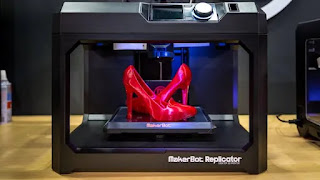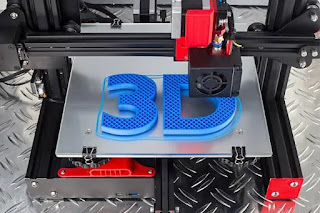What is a 3D Printer?
A 3D printer is a type of material design printer that uses additive manufacturing to create 3D models and products of devices and components.
3D printers use computer-aided design (CAD) or software-created 3D design diagrams, figures, and patterns to directly build three-dimensional prototypes and end products.
3D printers are also known as additive manufacturing or fabrication printers. 3D printing employs computer-aided design to create three-dimensional objects by layering. 3D printing, also known as additive manufacturing, involves layering materials such as plastics, composites, or bio-materials to create objects that vary in shape, size, rigidity, and color.
What Is the Process of 3D Printing?
3D printing is the process of creating solid, three-dimensional objects from a digital file using specialized equipment. The procedure has been in use since the 1980s, when Charles W. Hull invented it and produced the first 3D-printed part. Since then, the field of 3D printing has expanded exponentially and offers limitless opportunities.
Overview of 3D Printing
3D printing is a method of creating objects layer by layer using computer-aided design, or CAD. 3D printing is widely used in the manufacturing and automotive industries, where 3D printers are used to create tools and parts.
As 3D printing's capabilities expand, so will its value: by 2029, the 3D printing industry is expected to be worth $84 billion. Because of this expansion, we will undoubtedly interact with 3D-printed products, as well as homes and buildings.
The healthcare industry is also being shaken by 3D printing. The COVID-19 pandemic overwhelmed hospitals in 2020, increasing the demand for personal protective equipment. Many healthcare facilities used 3D printing to provide their employees with much-needed protective equipment as well as parts to repair their ventilators. Large corporations, startups, and even high school students equipped with 3D printers stepped forward to answer the call. Not only will 3D printing change the way we make PPE and medical equipment, but it will also streamline prosthetics and implants.
Although 3D printing is not a new concept, some people are still confused about what it is and how it works. Here's an introduction to 3D printing.
What Exactly Are 3D Printers?
In a nutshell, 3D printers use CAD to create 3D objects from various materials such as molten plastic or powders. 3D printers can range in size and shape from desk-top models to large construction models used in the construction of 3D-printed houses. There are three main types of 3D printers, each with its own method.
3D PRINTERS TYPES
Stereolithographic (SLA) printers use a laser to transform liquid resin into plastic.
Selective laser sintering (SLS) printers use a laser to sinter polymer powder particles into an already solid structure.
The most common are fused deposition modeling (FDM) printers. These printers expel thermoplastic filaments, which are melted through a hot nozzle to layer an object.
What Is the Importance of 3D Printers in the Future?
3D printers are a promising tool for the future of manufacturing due to their flexibility, accuracy, and speed. Many 3D printers are now used for what is known as rapid prototyping.
Companies all over the world are now using 3D printers to create prototypes in hours rather than months and potentially millions of dollars in research and development. In fact, some companies claim that 3D printers make prototyping 10 times faster and 5 times cheaper than traditional R&D processes.
3D printers can play a role in almost every industry. They are not only used for prototyping. Many 3D printers are being used to print finished goods. This futuristic printing method is actually being used by the construction industry to print entire homes. 3D printers are being used in schools all over the world to bring hands-on learning into the classroom by printing three-dimensional dinosaur bones and robotics pieces. Because of its adaptability and flexibility, 3D printing technology is a game changer in any industry.
What Kinds of Things Can You 3D Print?
What can be printed with 3D printers is extremely versatile. Plastics, for example, can be used to print rigid materials such as sunglasses. They can also use a hybrid rubber and plastic powder to create flexible objects such as phone cases and bike handles. Some 3D printers can even print with carbon fiber and metallic powders to create extremely strong industrial products. Here are a few examples of common 3D printing applications.



